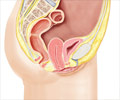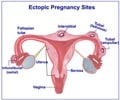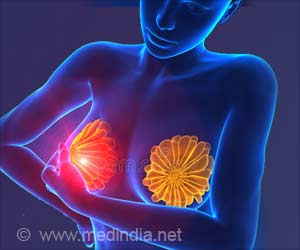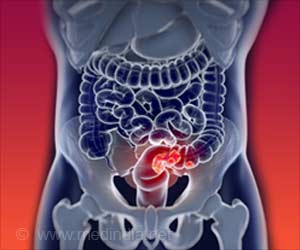Study says new molecular imaging technique may provide physicians and patients with a noninvasive way to learn more information about a type of cancer of the uterus lining
A study published in the October issue of The Journal of Nuclear Medicine says that a promising new molecular imaging technique may provide physicians and patients with a noninvasive way to learn more information about a type of cancer of the uterus lining called "endometrial carcinoma"—one of the most common malignant female tumors.
"Endometrial carcinoma is one of the most common female malignant tumors," says Hidehiko Okazawa, M.D., Ph.D., professor in the division of medical imaging at the biomedical imaging research center at the University of Fukui in Japan and one of the lead researchers of the study. "The method of positron emission tomography (PET) imaging we used in the study is noninvasive, and it has tremendous potential to save women with endometrial carcinoma from undergoing unnecessary operations and biopsies that could sabotage their reproductive potential."If the disease is caught early enough, the five-year survival rate is higher than 90% for patients with endometrial carcinoma. PET imaging may provide physicians with a tool that lets them recognize the extent of the disease before it reaches advanced stages.
This study shows that PET is a promising molecular imaging technique for personalized therapy. Molecular imaging and nuclear medicine provide the possibility of determining the invasiveness and aggressiveness of malignant tumors in the uterus earlier on, before disease progresses. With this technique, physicians gain the advantage of a more precise diagnosis along with the ability to better predict the tumor's growth patterns and plan for the most appropriate therapeutic treatment strategy.
"The article in the JNM from Dr. Tsujikawa and colleagues provides an example of the unique capacity of molecular imaging to measure in vivo cancer biology," says David A. Mankoff, M.D., Ph.D., professor of radiology, medicine and bioengineering at the University of Washington and Seattle Cancer Care Alliance in Seattle. "Most notably, it shows how imaging multiple facets of tumor phenotype—in this case, estrogen receptor expression and glucose metabolism—can provide insight into the clinical behavior of cancer. The broad implication of this study, and other similar studies that have tested PET and molecular imaging to characterize cancer characteristics, is that imaging can help direct cancer patients toward optimized, individualized treatments."
In the study, the researchers used a specialized form of PET imaging called "estrogen receptor expression imaging" for 22 patients with endometrial adenocarcinoma and nine patients with endometrial hyperplasia (a thickening of the uterine lining that is a risk factor for developing endometrial cancer) to evaluate diagnostic accuracy. All patients underwent preoperative PET scans with 18F-fluoroestradiol (18F-FES)—a tracer that has been successfully used in diagnosing breast cancer—and 18F-fluorodeoxyglucose (18F-FDG) to compare differences in tracer accumulation.
The researchers confirmed that endometrial carcinoma reduces estrogen dependency with accelerated glucose metabolism as it progresses to a higher stage or grade. By combining the two tracers, researchers were able to use a new index of uptake ratio that can better predict pathologic stages and aggressiveness of tumors. The results of the study were encouraging, with the combined techniques having 86% accuracy.
For endometrial cancer, estrogen receptor expression is related to endocrine responsiveness and indicated by FES uptake. Poorly differentiated tumors often have increased and abnormal breakdown of glucose, indicated by FDG. The combination of the two, as indicated by the study, was better than either alone at indicating the aggressiveness of the tumor.
Source-Eurekalert
RAS
 MEDINDIA
MEDINDIA




 Email
Email










